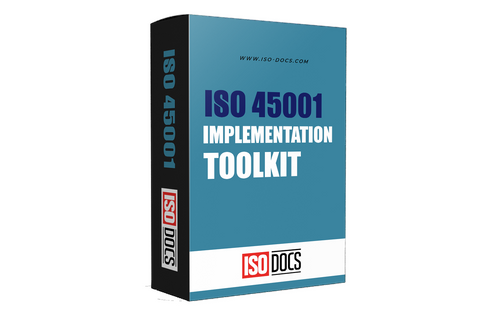ISO 45001 Risk Assessment Form Template
Introduction
What ISO 45001 describes as the cornerstone of occupational health and safety management is risk assessment. ISO 45001 risk assessment form gives an organized and recorded approach to identifying hazards at the work place, assessing hazards, and strategizing specific control actions. This is to ensure that organizations are at a position to manage threats to workers health proactively, meet legal stipulations and promote the constant development of safety. Not only do the form and the underlying process minimize accidents and ill health but they also contribute to the establishment of a positive safety culture and accountability throughout the organization.

Meaning And significance Of Risk Assessment On ISO 45001
The main objective of risk assessment in the ISO 45001 is to comprehensively identify risks, evaluate the risks involved and put in place effective controls to either eradicate the risks involved or minimize the risks to reasonable levels. Risk assessment is a legal and standard tool, which helps organizations to:
-
Eliminating injuries and job-related diseases.
-
Compliance with legal, regulatory requirements.
-
Investing in and prioritizing safety interventions.
- Stakeholder confidence in organizational safety.
Important Components Of An ISO 45001 Risk Assessment Form.
A good ISO 45001 risk assessment form provides:
- Task or process assessed.
- Location/site details.
- Assessment team names.
- Review date and date of assessment.
- Sequential task steps.
- Hazards of every step.
- Existing controls.
- First-level risk rating (e.g., risk rating by a risk matrix).
- Additional controls needed.
- After-Control residual risk rating.
- One who does things.
- Status/closure information.
-
Allusions to regulatory/ISO provisions.
Types Of Hazards Considered
The risks addressed by ISO 45001 risk assessment are wide-ranging and they may include:
1. Physical Hazards: Slips, trips, falls, moving equipment, manual handling, noise, vibration, bad ergonomics.
2. Chemical Hazards: Inhalation, ingestion or dermal exposure to hazardous substances; storage hazards.
3. Biological Hazards: Pathogens, bodily fluids, allergens or bio contaminants.
4. Environmental Hazards: Fires, enclosed areas, heat, electricity, radiations.
The Risk Assessment Process: Step-by-step.
1. Preparation and Setting of context.
- Establish the context and area of the risk assessment (area, activities and organization).
- Identify interested parties and stakeholders.
2. Hazard Identification
- Engage employees, audit previous accidents, make inspections and checklists.
- Identify every potential source of damage to every step.
- Look at routine and non-routine activities, also at emergency scenarios.
3. Risk Evaluation
For each hazard, assess:
- The risk (chance) of occurrence.
- The seriousness (possible result) of an event.
- Quantify and rank risks (e.g., High, Medium, Low) by use of risk matrices or scoring tables.
4. Pre-Existing and Additional Controls.
- Name existing risk control procedures of each item (engineering, administrative, PPE).
- Assess whether controls are sufficient or more should be done.
- Recommend some other measures that would change the ranking of controls- between elimination and substitution to PPE.
5. Delegating Shares and Duties.
- Obviously designate control implementers.
- Establish timeframes and monitor.
6. Residual Risk Rating
- After controls are put in place, re-examine and document the residual risk levels.
- Modify mitigation measures when residual risk is still in unacceptable levels.
7. Approval, Documentation and Periodical Review.
- Get management or OH&S coordinator approval.
- Schedule the following review dates and keep auditing records.

The Following Are Points To Consider In Your Form
-
Identify document-specific hazards that apply to each stage and not generic workplace hazards.
-
Included preventive and monitoring controls (e.g. training, signage, inspections).
-
Consultation with workers or representatives on records to enhance accuracy and buy-in.
- Refer to applicable OHS legislation or ISO 45001 clause.
Roles And Responsibilities In Risk Assessment
1. Senior Management
- Monitor the process and provide sufficient resources.
- Sanction measures and evaluations.
2. Health & Safety Manager/OHSMS Coordinator.
- Create, sustain and evaluate risk evaluation processes.
- Train and support personnel in evaluation.
3. Line Managers & Supervisors
- Make sure work areas and activities are assessed.
- Oversee control measures.
4. Employees
- Be involved in the identification of hazards.
- Adhere to control measures and inform about new risks in time.
5. Safety Committees/Representatives
- Promote employee participation.
- Examine risk evaluations and propose better.
Record Keeping and Follow-Up
Risk assessment documents are to be kept in a safe place, with revision histories. Documentation of compliance and ease of auditing. Follow up on action items and regular reviews (e.g. quarterly or post incident) help keep the system relevant and effective.
- Common Templates and Tools
-
Tabular forms with stepwise task analysis.
-
Risk rating matrices (likelihood v. consequence).
-
Hazard identification checklists.
-
Action tracking registers.
- Transparency and availability of documentation: integrated with OHSMS software or spreadsheets.
Best Practices In ISO 45001 Assessment of risk.
-
Engage in diversity of opinions-workers, supervisors, technical experts.
-
Forms can be tailored to particular sites, activities and legal needs.
-
Be simple and clear to access.
-
Incorporate risk assessment into planning, changes, supplier management, incident investigations and audits.
-
Create ongoing enhancement through revised assessments following alterations or occurrences.
- Use external benchmarks, standards, and professional advice on complex risk profiles.
Conclusion
The ISO 45001 risk assessment form is a critical management tool that translates the compliance requirements to day-to-day safe working practices. The rigorous form with systematic use is useful to make sure that all hazards are taken into account, risks are correctly assessed, and controls are applied effectively to minimize the harm and maximize the protection of the law. Constant progress and introduction of safety into the organizational culture is facilitated by periodic review, worker consultation and thorough documentation. Companies with detailed ISO 45001 risk assessment form are in a better position to ensure protection of workers, operations maintenance, and adhere to their occupational health and safety responsibilities.


